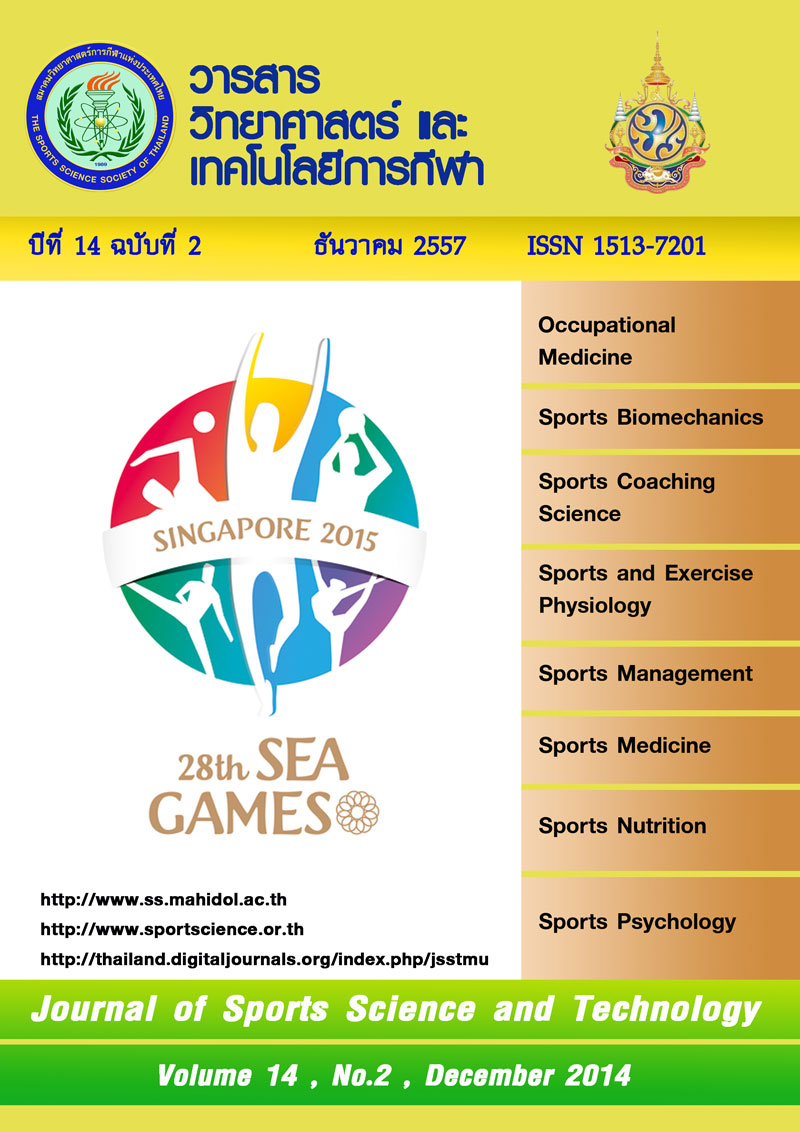DOES SPORTS BRA LIMIT RESPIRATORY FUNCTIONS DURING CONSTANT SPEED EXERCISE?
Keywords:
sports bra, respiratory function, exerciseAbstract
The present study is aimed to investigate the effect of sports bra on respiratory function at rest and during exercise. Sixteen healthy females voluntarily and repeatedly participated in 3 randomised trials of no bra (NB), casual bra (CB) and sports bra (SB). They accomplished standard resting spirometers (Static lung volumes included tidal volume (VT), inspiratory capacity (IC), vital capacity (VC), inspiratory reserve volume (IRV), expiratory reserve volume (ERV), respiratory rate (RR), minute ventilation (V̇E); and dynamic lung volumes included force expiratory volume in 1 second (FEV1.0), force vital capacity (FVC), proportion of force expiratory volume in 1 second and force vital capacity (%FEV1.0/FVC), maximum voluntary ventilation (MVV), and peak expiratory flow (PEF)) before and immediately after putting on bras. Exercise was conducted on a motor-driven treadmill at constant speed of 4 mph continuously until heart rate reached 60, 70 and 80% of age-predicted maximal heart rate (MHR). Only parts of static lung volumes were detected during exercise in which data were collected. Data were compared at rest, 60, 70 and 80% MHR and every min of 5 min recovery period. Results showed that FEV1.0, FVC and MVV were significantly decreased (p<0.05) when compared between pre- and immediate post- SB condition. During exercise, there were no significant differences of respiratory functions between bra conditions at 60, 70 and 80%MHR. In conclusion, sports bra exhibit only reductions in dynamic components. This effect disappeared as exercise was commenced. There was no limitation on respiratory function of either static or dynamic components during exercise. The present studies indicated that this brand (Wacoal WR1466, of commercial sports bra limits no respiratory functions during exercise and may be appropriate for females with active lifestyle.






